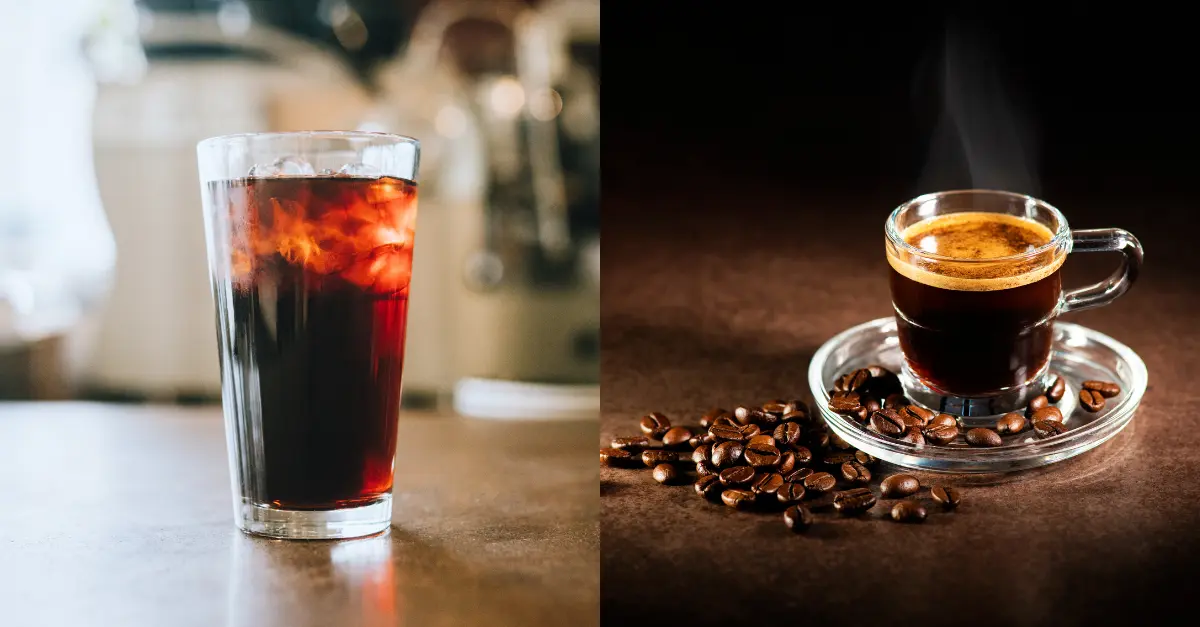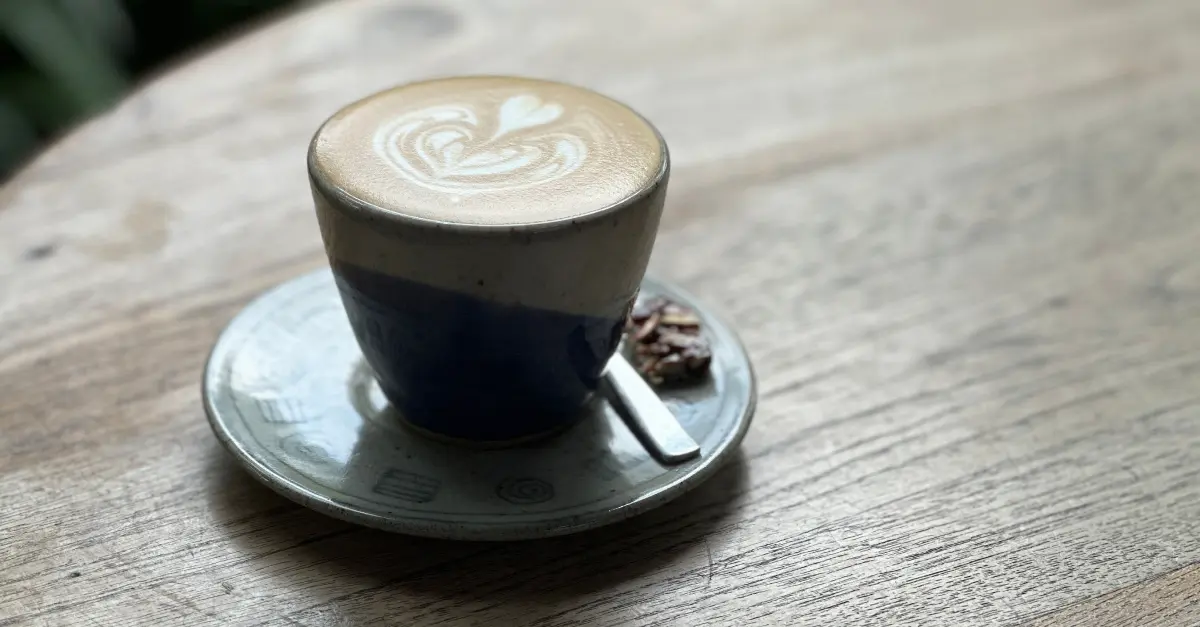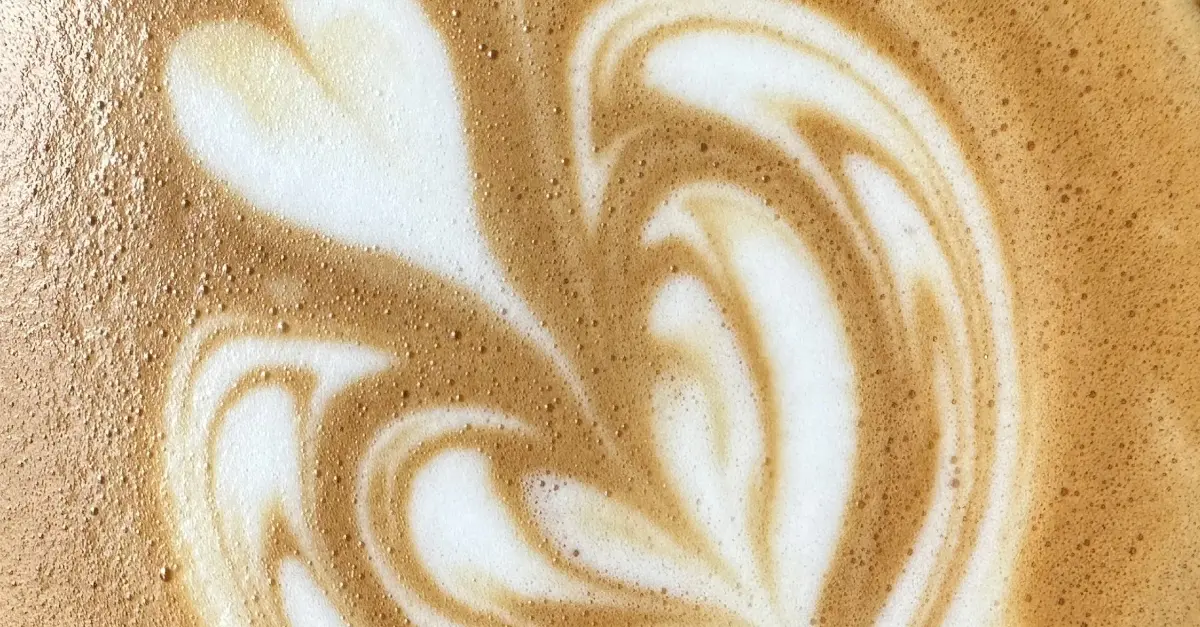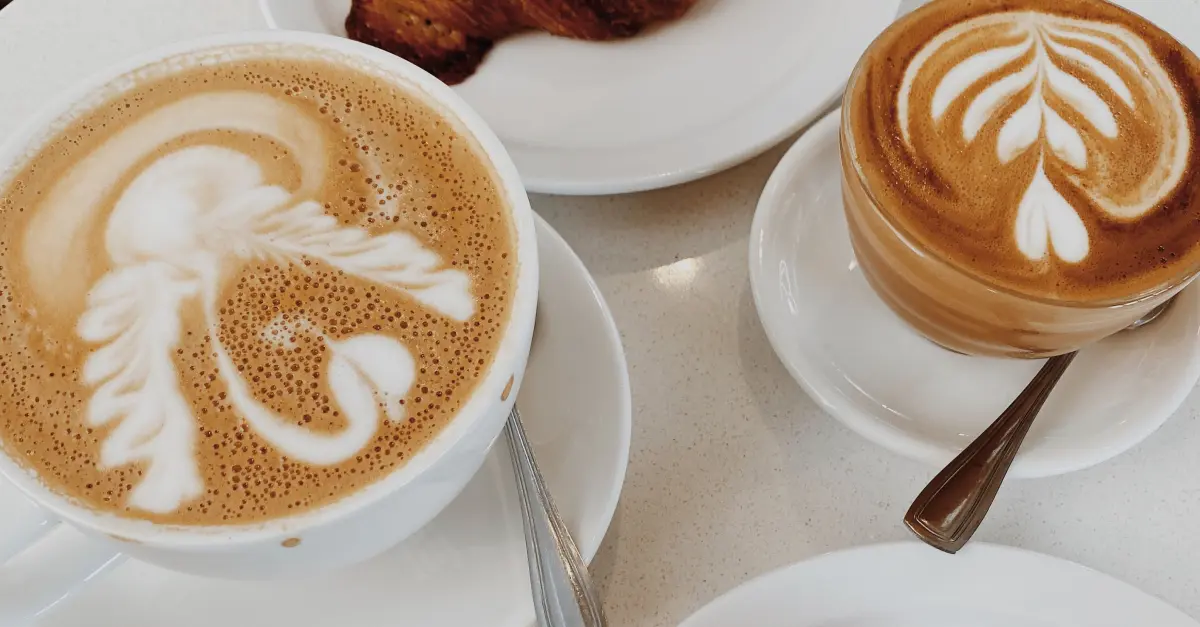When comparing different coffee brewing methods, the two top contenders that coffee lovers debate is cold brew and espresso. Cold brew coffee has gained significant traction recently as a refreshing alternative to conventional iced coffee.
On the other hand, espresso is a traditional Italian hot brew that dates back to the 1900s. Its bold flavor profile makes it ideal for creating various coffee styles.
The differences between cold brew and espresso often revolve around brewing techniques, taste preferences, and serving styles.
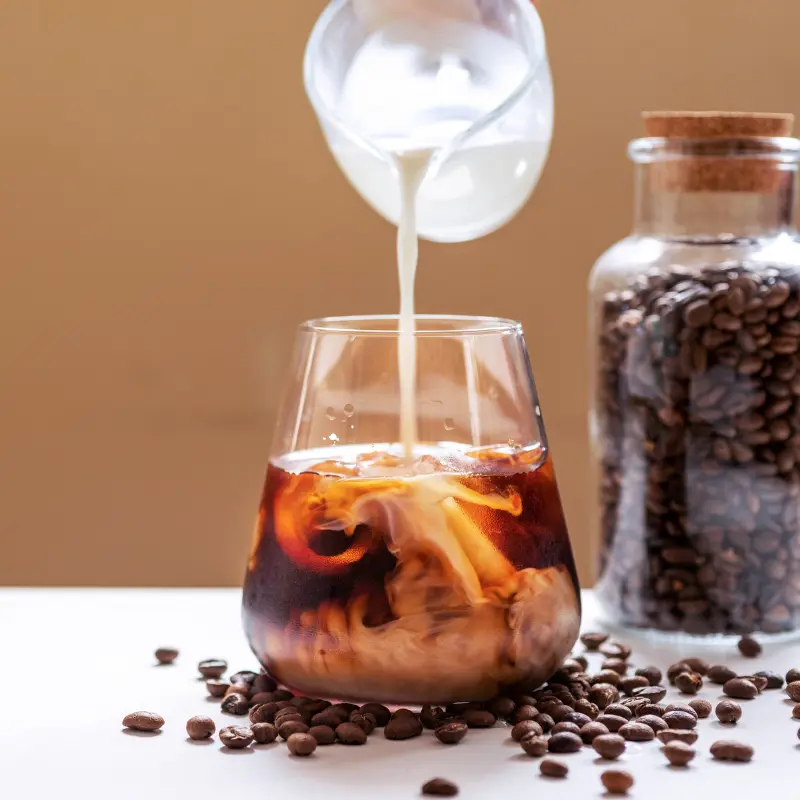
How Cold Brew and Espresso Differ
Cold brew and espresso are two distinct coffee brewing methods that produce a concentrated form of coffee. The cold brew process, also known as cold water extraction or cold pressing, is an ancient brewing process originating in Japan.
Cold brewing involves steeping coarse coffee grounds in room-temperature cold water for 12 - 24 hours. This method of extracting coffee produces a unique flavor profile different from conventional brewing methods.
Thus, cold brews tend to have low acidity levels, making the flavor smoother and milder than other cold coffee styles like iced coffee. Furthermore, the coffee is concentrated and doesn’t lose intensity when diluted with milk, unlike iced coffee.
In contrast, espresso comes from pushing hot water through finely-ground coffee under high pressure, using an espresso machine. It extracts flavors and oils from the coffee beans quickly, creating a robust espresso shot with a bold flavor and a layer of rich crema.
Cold brews are typically served in tall glasses over ice or with milk or water and are a refreshing choice for hot summer days. Espresso comes in small, concentrated shots presented in a teacup. Espresso shots also create various espresso-based beverages like cappuccinos and lattes.
Brewing Process and Equipment
The brewing process for a cold brew and espresso differ significantly, producing distinct flavors and coffee experiences.
The Cold Brewing Process
Cold brew coffee has a simple but lengthy brewing process, using minimal equipment.
The beverage originates from Japan, where the process of extracting coffee using cold water has been the traditional method of coffee brewing for centuries.
Known as Kyoto-style, slow-drip cold brew, or Dutch coffee in East Asia, the Japanese brewing process involves dripping cold water through coffee grounds for several hours at room temperature.
The modern cold brewing process includes steeping coarse coffee grounds in cold water for up to 24 hours to extract the coffee slowly. You can steep the coffee in a mason jar, a French press pot, or a dedicated cold brew maker.
The coffee grounds to water ratio varies according to your preference and how you’ll use the brewed coffee.
Typical water-to-coffee ratios include 1:2 (one part coffee to two parts water) and 1:4 (one part coffee to four parts water) for concentrated shots of cold brew.
The above ratios are ideal for making concentrated cold brews to serve with milk, cream, or water. However, if you want a mellow brew for drinking straight up, you can double the water amount to eight or ten parts.
Also, if you’re using the 1:2 ratio, we recommend using a cold brew dripper as the coffee grounds will absorb all the water if you steep it.
Nitro cold brew is a trendy variation of this beverage made by infusing the drink with nitrogen gas, creating a creamy, stout-like texture. Nitro cold brew is served chilled without ice to preserve the foam.
The Espresso Brewing Process
The espresso brewing process is faster in comparison.
It requires an espresso machine that works by heating water to a precise temperature, usually 195°F - 205°F (90°C to 96°C). The equipment then pushes the hot water rapidly through the finely ground coffee at approximately 9 bars.
The pressure extracts the coffee flavors and oils, creating a concentrated espresso shot.
The espresso machine’s design enables it to generate the necessary pressure to make espresso coffee. Moreover, it includes features and settings for making various espresso-based beverages like cappuccinos, lattes, and mochas.
Taste and Flavor Profile
Cold brew and espresso beverages have unique characteristics that set them apart regarding their taste and flavor profiles. Cold brews have a smoother taste and often exhibit subtle notes of chocolate, caramel, and nuts.
The steeping process using cold water limits the extraction of bitter and acid compounds of coffee grounds, giving the cold brew taste a mellow and balanced profile.
In comparison, the espresso flavor profile showcases intense and bold flavors with dark chocolate, roasted nuts, and fruity or floral undertones, depending on the coffee bean type.
The high-pressure extraction process for making espresso extracts flavors and oils from the coffee, giving it a rich and full-bodied taste profile. The short brewing time creates a complex flavor profile that lingers on the palate.
In comparing the texture of cold brew vs espresso, the cold brew has a light texture with a silky mouthfeel. It is less heavy on the tongue, making it a more drinkable and refreshing option for the hot season.
However, the espresso has a thick and creamy texture derived from its crema. It is a layer of foam created during the brewing process, which gives espresso its luxurious and velvety mouthfeel.
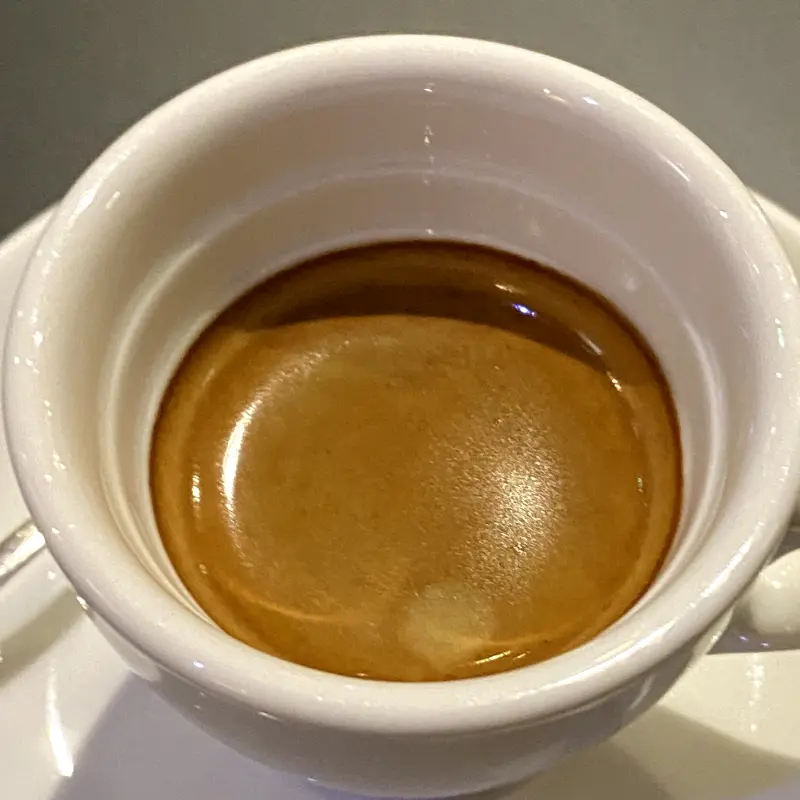
Health Benefits: Is One Coffee Better Than the Other?
Both cold brew and espresso beverages types offer certain health benefits with moderate consumption. However, specific benefits may vary due to differences in the brewing process. One of these includes the acidity levels in cold brews versus espresso drinks.
Cold brews have low acidity levels, making them ideal for individuals with acid sensitivity or digestive issues.
Additionally, the low acidity is less detrimental to teeth and may help reduce the risk of tooth decay and cavities. Espresso consumption also provides potential health benefits due to its high caffeine content. These include increased alertness and cognitive function.
Both coffee drinks are rich sources of antioxidants, such as polyphenols and hydrocinnamic acids, which provide various health benefits. Antioxidants are anti-inflammatory and may protect against chronic diseases like Type 2 diabetes and heart disease.
Furthermore, some studies show that regular consumption of coffee may help reduce the risk of liver disease and certain types of cancer. Generally, individual responses to coffee consumption vary, and adding sweeteners and other additives may impact overall health benefits.
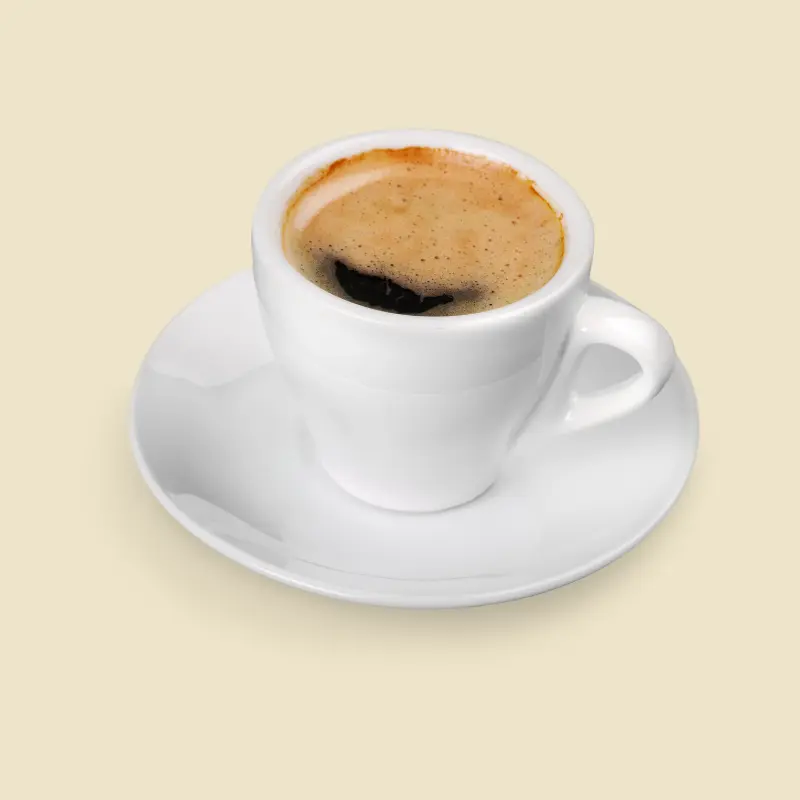
Conclusion
So, whether you choose the relaxed sipping of a cold brew coffee or the energizing espresso shot, both options have distinct characteristics to satisfy different tastes and occasions.
The cold brew is a refreshing, mellow coffee with subtle flavors and acidity ideal for warm weather. On the flip side, if you need an energy boost to get you through the day, the espresso’s rich, concentrated profile with a creamy mouthfeel might be your go-to choice.
